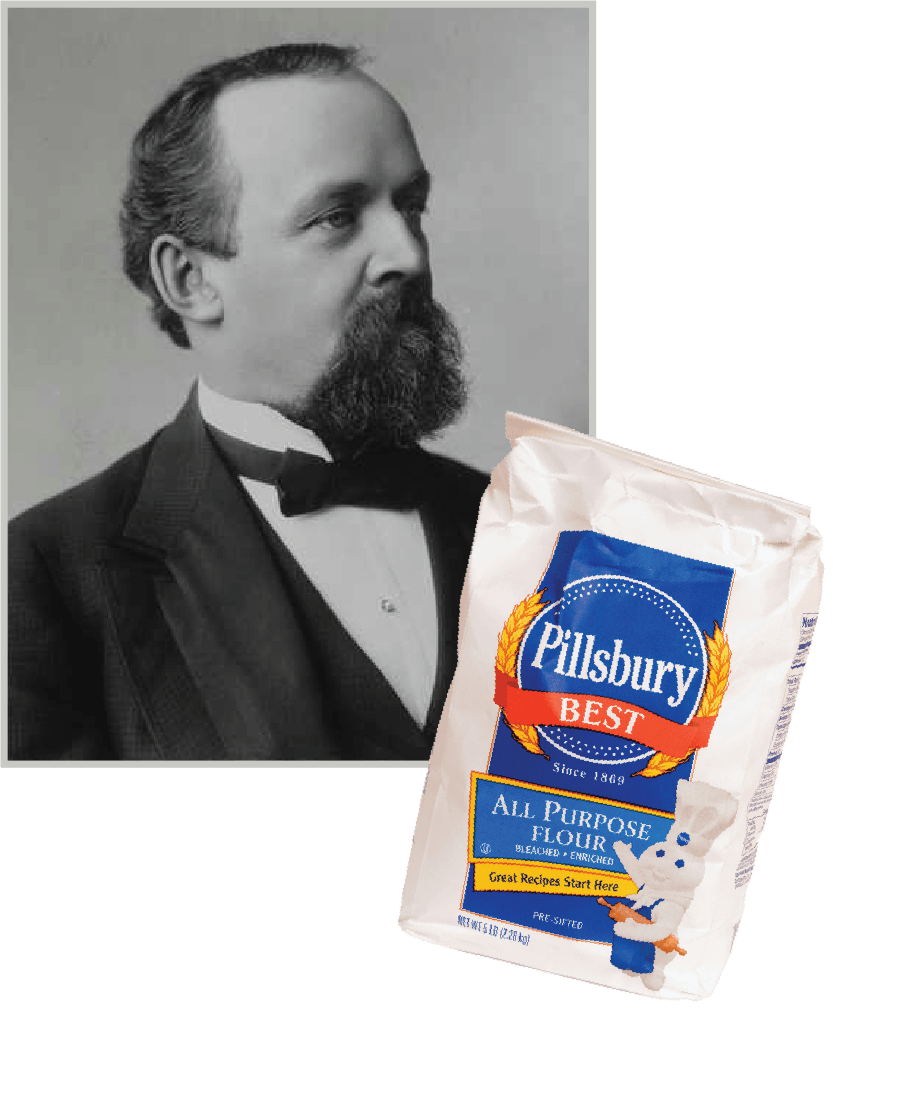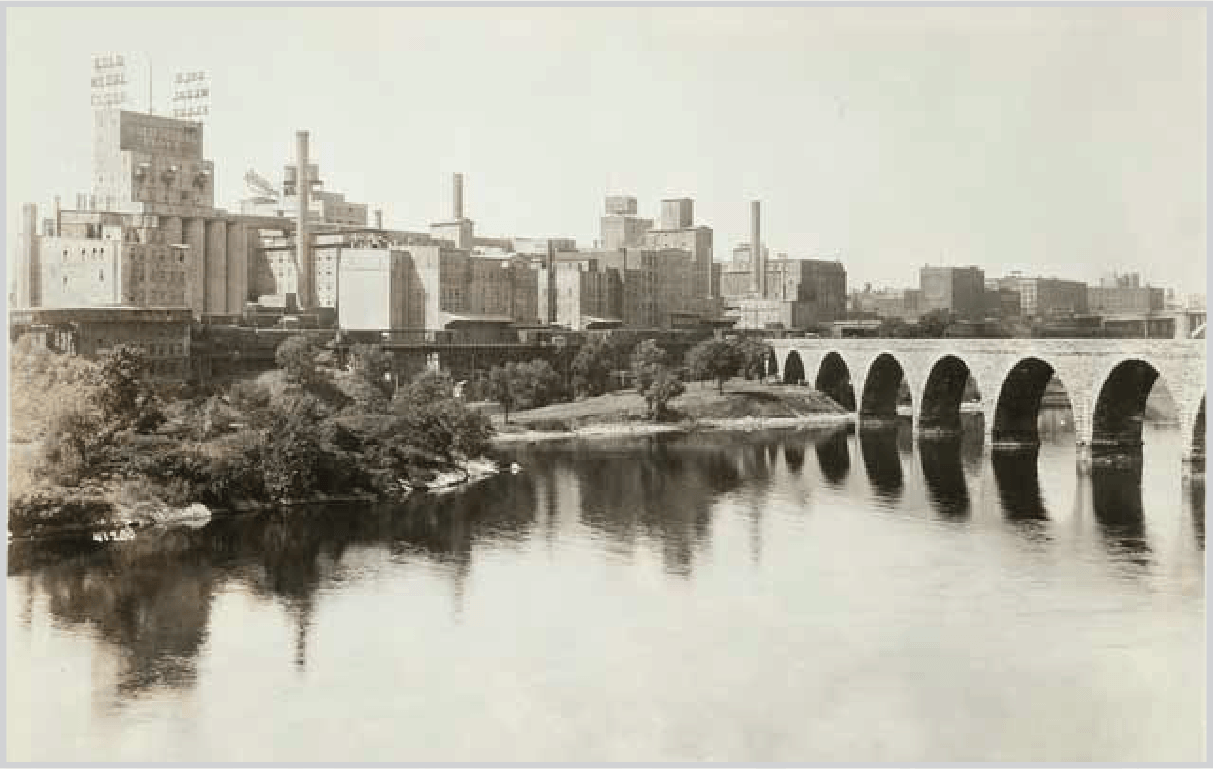How Did Agriculture Shape Minnesota?
One of the most well known names in Minnesota during the 1800’s was Pillsbury. Charles Pillsbury was the co-founder of the Pillsbury Company, which was known for producing the highest quality flour at the time. Through technological innovation and the use of natural resources like the Mississippi River, businesses like Pillsbury were able to build a strong agriculture industry in Minnesota. This has had a lasting effect, helping Minnesota become the powerhouse agriculture state that it is today.
Photo courtesy of MNopedia

Why were so many grain mills built in Minneapolis?

Source: MNHS Collections
Because it had direct access to the Mississippi River, which flowed right through the city, and was the main waterway that could transport goods to the rest of the country. Back then, grain mills were powered by water. The running river water moved the wheels, or water turbine, which then powered the steel rollers (the technology Charles Pillsbury used first), grinding countless kernels of grain into flour.
Pillsbury once had the largest grain mill in the world, located right in Minneapolis. At one point, there were more than 20 mills along the river in Minneapolis.
The western part of Minnesota was full of large, never-ending grain fields. Having the grain processed close by in Minneapolis made good business sense for farmers, and for the mill owners.
Once the grain was made into flour, it needed to be transported to the rest of the country. This was done primarily in two ways—on the Mississippi River, and on the railroad. Rivers were, and still are, a major transportation resource, hauling more than 60% of all the country’s grains.
Agriculture is an important part of Minnesota’s history. Big ideas, technology and natural resources, especially water, created a strong agriculture industry that helped our state grow.
